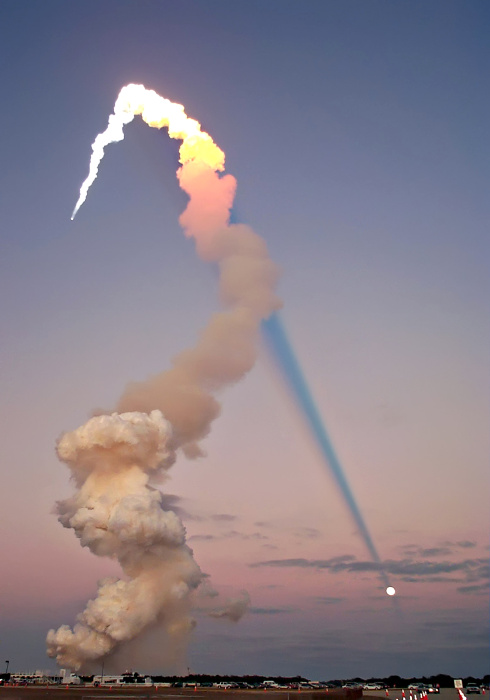- Air Homepage
- Air Quality Testing
- Expert Judgement
Beyond the Code: Expert Judgement in Air Quality Science
We breathe air that's governed by hidden variables, and only an expert can tell you what they are. Make complex air pollution models like CALPUFF work with human intelligence. Expert judgement is a software estimation method based on checking with one or more experts with relevant experience. Expert opinions are collected, assessed, and then combined to make the most accurate estimate. You can use this method for any size project.
Calmet Secrets: The Hidden Switches Only Experts Know - Did you know that changing one hidden switch in CALMET can completely change your pollution forecast and decide whether your project is approved or rejected? CALPUFF lets you model complex terrain, sparse weather data, and long-range pollutant transport with advanced settings and expert judgement.
How does this concept apply to air quality and air dispersion modeling? Based on known or estimated emissions, air dispersion models predict pollution concentrations. The concept can be used by engineers and technicians to design efficient air pollution control systems and identify pollution sources. The impact of air pollution on human health and the environment can also be assessed with air dispersion models.
Learn more about environmental proficiency.
There are a lot of inputs to the CALPUFF air dispersion model. In most cases, the variables don't change much and the defaults supplied with the model work fine, and are often preferred by the regulatory authorities checking and approving projects based on their expert judgement. There are some in the switch settings for the CALPUFF sister program, CALMET.
Which type of air models am I referring to?
CALMET is a 3-dimensional meteorological model that analyzes and scrutinizes weather data (e.g. MM5), then produces an output file for CALPUFF to read. Modelers use CALMET to refine an initial guess field based on local terrain, land use, and meteorological data. This requires quite a bit of expert judgement on its own, so the program generates a Step 1 wind field (where model meteorological data like MM5 and terrain/land use data are combined), then a Step 2 wind field based on empirical data.
Other input parameters are obviously project-specific and change with every job, regardless of which model is used. You can apply them to source emission characteristics, location, terrain, etc.
Expert Weather-Data Processing
Expert judgement is needed for the third group of variables. Their use is specific to this modeling system, and their choices could have a big impact on the outcome of the modelling. Switches like these:
BIAS - Based on surface and upper air observations, this program interpolates Step 1 winds and assigns a value to each vertical layer grid cell. What does that mean? Surface observations and upper air observations both contribute to each layer. Make sure you use your expert judgement. Positive bias favors upper air data, while negative bias favors surface data.
There's a bias value for each predefined atmosphere layer. The upper and surface winds get equal weight if bias is zero. In a +1 bias, all the weighting goes to upper air observations, in a -1 bias, all the weighting goes to surface data.
A good dispersion modeler can use bias in a narrow winding valley where observations are sparse, like a distant upper-air station and a single surface station. Based on our expert judgement, we could assign +1 to bias for the upper layers, ignoring surface observations at these levels. Near the ground, -1 to accept surface observations only at the lowest levels. The intermediate layers could then be filled with intermediate values. Each data source's weight is reduced by a bias value.
- IEXTRP - Set to -4 to incorporate similarity theory. Surface winds are extrapolated vertically with IEXTRP, as well as layer 1 data from upper air stations (for which data is only available twice a day).
- RMAX1 over land at surface layer, RMAX2 over land aloft, and RMAX3 over water. During step 2, these expert judgement parameters determine the maximum horizontal distance from the grid location observed data.
- WIND FIELD PARAMETERS - Includes RMIN (minimum radius of influence for wind interpolations), TERRAD (terrain radius of influence), R1 and R2 (distance to point of equal weighting between initial guess and observed data for surface and upper layers), RPROG (weighting for forecast wind data), DIVLIM (divergence), NITER (number of iterations), CRITFN (Froude Number), and ALPHA (weighting for kinematic effects).
- BARRIER PARAMETERS include NBAR (number of wind interpolation barriers), KBAR (number of relevant levels), XBBAR/YBBAR/XEBAR/YEBAR (starting and ending coordinates of barriers). When terrain doesn't block wind enough, barriers are used.
- DIAGNOSIS OPTIONS - Here we get into more specialty options where the model defaults are often selected.
- IDIOPT1 (where to get surface temperature data from),
- ISURFT (which surface meteorological station to use),
- IDIOPT2 (specifies how to get temperature lapse rate data),
- IUPT (determines which upper air station to use in lapse rate calculations),
- ZUPT (lapse rate depth),
- IDIOPT3 (sets where first guess wind data comes from),
- IUPWND (which upper air station for wind data),
- ZUPWND (top / bottom of layer for first guess winds),
- IDIOPT4/IDIOPT5 (empirical surface/upper wind components respectively for wind field module),
- LLBREZE (lake breeze), NBOX (lake box regions),
- XG1/XG2/YG1/YG2 (these define the region of interest),
- XBCST/YBCST/XECST/YECST (used for defining the coastline),
- NLB (number of stations in each box) and
- METBXID (identification for each met station)
Bring in the expert judgement in CALPUFF
Once the CALMET process is done, modellers input data into the CALPUFF model, and another set of parameters needs expert judgement.
Is it a puff or a slug? MSLUG accepts puff/slug (stretched puff) values. When emissions are constant or causality isn't critical, use puffs, as the model runs more efficiently.
 We're taking care of it for you
We're taking care of it for youMSPLIT splits puffs. It's best for long-range transport calculations and nighttime emissions. The model can break the puff and account for wind shear more accurately, and it's more relevant when the grid resolution is good. If puffs split into three sections, it can overload the computing resources, which can be controlled with the MXPUFF command. Modelers use their expert judgement to figure out which parameters to use.
MDISP - Dispersion Coefficients. It gives CALPUFF some characteristics like ISC3, CTDM, or AERMOD. PG, Pasquill-Gifford, is the default.
MCTSG and MSGTIBL are subgrid scales. Impacts on terrain features too small to be captured by gridded topographical data. CTSG lets the model resolve these special features. With SGTIBL, you can incorporate your expert judgement as well as high resolution coastline modelling and coastal fumigation effects.
Sometimes molecules interact with each other and change. Calpuff can handle some of these, but some chemistry expertise is needed. Some chemical reactions require background concentrations of other substances, like ammonia or ozone, and default values work fine in other cases. For special rules about these situations, the modeler should check with the regulator in some jurisdictions.
If you are looking for a good group of modelers for your project, please contact Calvin Consulting Group Ltd. Calvin Consulting Group Ltd. has been around for more than 20 years, and its team is made up of experienced professionals. Besides that, they've done a lot of successful projects.
Calvin Consulting Group Ltd., for example, develops financial models for banks and other financial institutions.
Absolute probability expert judgement receives a lot of attention when dealing with statistics of human behaviour, an endeavour with many independent variables. We can see also that it applies well to something more straightforward, such as the physical science of atmospheric dispersion. As our models improve over the decades, one would hope that fluid predictions will become easier from a practitioner's point of view, but this is not too likely. After all we have not been able to put an end to our human problems.
Go back from Expert Judgement to the Air Quality Testers web page, or visit the Stuff in the Air homepage.
How do you apply expert judgment to air quality?
Increasing complexity of models requires expert judgement for a greater number of model input decisions than ever before. The following is a primer on some of the more advanced variables in CALPUFF
Do you have concerns about air pollution in your area??
Perhaps modelling air pollution will provide the answers to your question.
That is what I do on a full-time basis. Find out if it is necessary for your project.
Have your Say...
on the StuffintheAir facebook page
Other topics listed in these guides:
The Stuff-in-the-Air Site Map
And,
Thank you to my research and writing assistants, ChatGPT and WordTune, as well as Wombo and others for the images.
OpenAI's large-scale language generation model (and others provided by Google and Meta), helped generate this text. As soon as draft language is generated, the author reviews, edits, and revises it to their own liking and is responsible for the content.



New! Comments
Do you like what you see here? Please let us know in the box below.